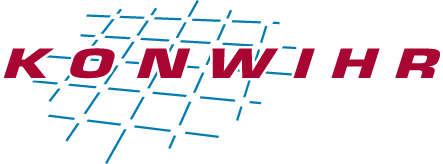Summary
The University of Würzburg has gathered expertise in the domain of complexity and topology in quantum materials. This effort is supported by the Würzburg-Dresden cluster of excellence on Complexity and Topology in Quantum Matter (ct.qmat) as well as the SFB 1170 entitled Topological and Correlated Electronics at Surfaces and Interfaces.
In the context of these collaborative research programs efficient use of modern supercomputing resources is of crucial importance. Our strategy is based on three pillars: education, optimal and sustainable software development, and data management.
A central project of the SFB 1170 entitled “Sustainable code development and optimization on modern supercomputing architectures” is dedicated not only to code development but also to education.
For education, we are embedded in the international software carpentry network where workshops are regularly organized in conjunction with our computer center and the center for computational and theoretical biology (CCTB) Würzburg.
In a collaboration with the computer center, we are setting up for the ct.qmat and SFB 1170 initiatives data management solutions that will allow us to comply with Findable, Accessible, Interoperable, and Reusable (FAIR) principles required for modern data sets. We are also in close contact with the FAIRmat initiative.
On the hardware front, the computer center of the University of Würzburg is operating a high performance computing (HPC) clusters. For our computationally more intensive jobs, we have access to the supercomputing resources of the Leibniz Supercomputing Centre Munich (LRZ) and the Erlangen Regional Computing Center (RRZE).
Our expertise lies in quantum Monte Carlo approaches to correlated and topological electron systems. We have developed and are further developing a generic implementation of the auxiliary field quantum Monte Carlo algorithm. This package [1] provides a tool to simulate experiment relevant Hamiltonians [2] as well as so called *toy* models that exhibit fascinating exotic phases and quantum phase transition [3]. We equally have expertise in classical Monte Carlo approaches and various forms of sampling strategies such as cluster updates as well as Langevin and Hybrid Monte Carlo [4]. We have equally gathered expertise in various continuous time impurity solvers [5,6]. These algorithms play a central role in so called dynamical mean field theories.
Supported KONWIHR Projects, past and present
A modern framework for classical spin models and lattice field theory on general topologies
Contact
Prof. Dr. Fakher Assaad, University of Würzburg
Project Scientists
Dr. Florian Goth, University of Würzburg
Selected References
[1] Martin Bercx, Florian Goth, Johannes S. Hofmann, and Fakher F. Assaad, The ALF (Algorithms for Lattice Fermions) project release 1.0. Documentation for the auxiliary field quantum Monte Carlo code, SciPost Phys. 3 (2017), 013.
[2] Ho-Kin Tang, J. N. Leaw, J. N. B. Rodrigues, I. F. Herbut, P. Sengupta, F. F. Assaad, and S. Adam, The role of electron-electron interactions in two-dimensional Dirac fermions, Science 361 (2018), no. 6402, 570–574.
[3] F. F. Assaad and Tarun Grover, Simple fermionic model of deconfined phases and phase transitions, Phys. Rev. X 6 (2016), 041049.
[4] Manuel Schrauth, Jefferson S. E. Portela, and Florian Goth, Violation of the Harris-Barghathi-Vojta criterion, Phys. Rev. Lett. 121 (2018), 100601.
[5] F. F. Assaad and T. C. Lang, Diagrammatic determinantal quantum Monte Carlo methods: Projective schemes and applications to the Hubbard-Holstein model, Phys. Rev. B 76 (2007), 035116.
[6] Markus Wallerberger, Andreas Hausoel, Patrik Gunacker, Alexander Kowalski, Nicolaus Parragh, Florian Goth, Karsten Held, and Giorgio Sangiovanni, w2dynamics: Local one-and two-particle quantities from dynamical mean field theory, Computer Physics Communications 235 (2019), 388–399.

